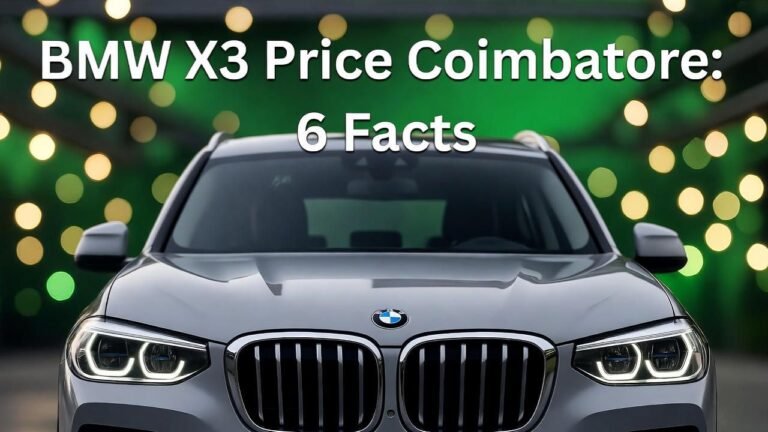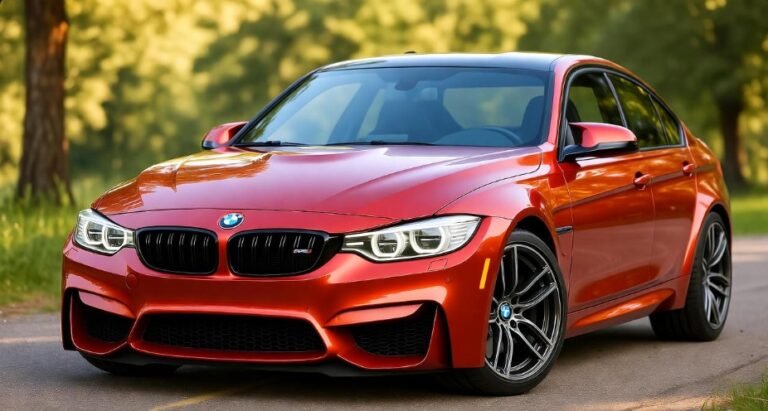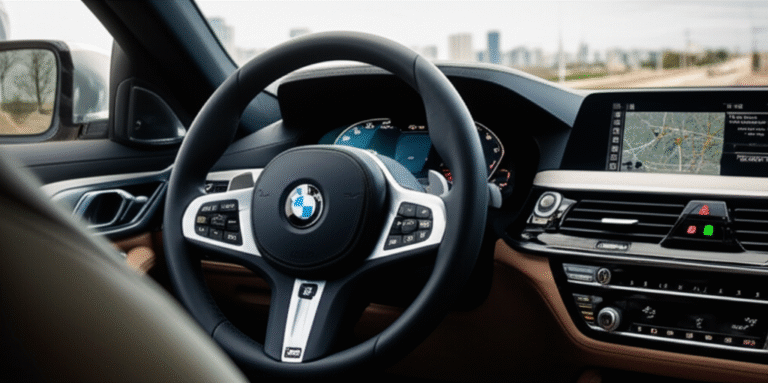Buy Second Hand BMW: 5 Stunning Deals
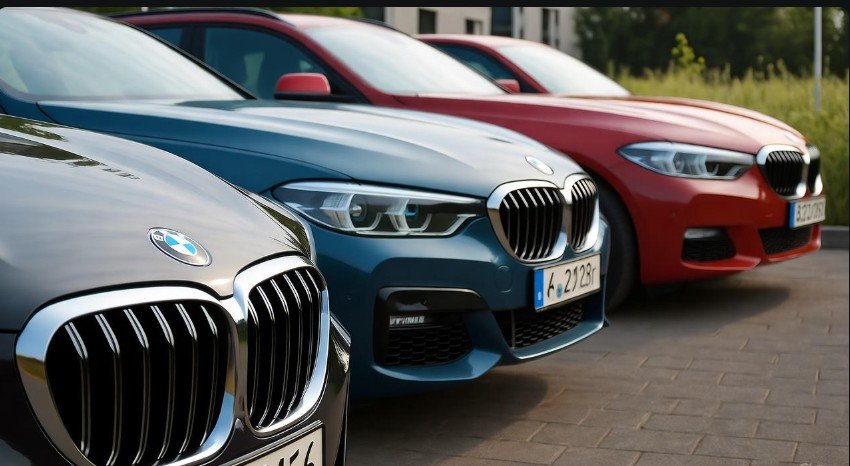
Here are five stunning deals on second-hand BMWs you can find today, making luxury affordable.
Key Takeaways
- Discover popular second-hand BMW models.
- Learn essential inspection tips for used BMWs.
- Understand the importance of vehicle history reports.
- Get advice on negotiating the best price.
- Find resources for pre-purchase inspections.
Dreaming of the ultimate driving machine, but concerned about the price tag? You’re not alone. Many car enthusiasts find themselves drawn to the refined engineering, exhilarating performance, and timeless luxury of a BMW. The good news is that owning a piece of this automotive excellence doesn’t have to break the bank. Buying a second-hand BMW can be a smart and rewarding way to get behind the wheel of a premium vehicle. Navigating the used car market can feel daunting, with so many options and potential pitfalls. But don’t worry, we’re here to guide you through finding some stunning deals on pre-owned BMWs. Let’s explore how you can make your BMW dreams a reality.
Why Buy a Used BMW? The Smart Choice for Luxury
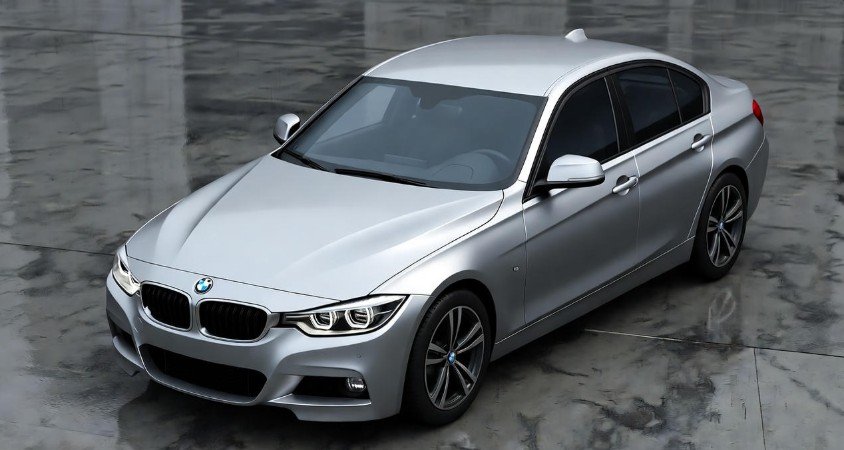
Purchasing a pre-owned BMW offers a compelling blend of luxury and value. New cars depreciate significantly in their first few years, meaning you can often find a BMW that’s only a few years old for a fraction of its original price. This allows you to step into a higher trim level, a more powerful engine, or a more luxurious model than you might be able to afford new. Furthermore, BMWs are known for their robust build quality and often last for many years with proper maintenance. This means a well-maintained used BMW can still offer many miles of enjoyable driving.
The appeal of a BMW goes beyond just the badge. It’s about the driving experience – the precise handling, the responsive engines, and the meticulously crafted interiors. When you buy second-hand, you’re not just buying a car; you’re buying into a legacy of automotive innovation and performance. Plus, the used car market is vast, offering a wide array of models, from sporty sedans to versatile SUVs, ensuring you can find a BMW that perfectly fits your lifestyle and needs. We’ll help you identify some of the best opportunities to snag a great deal.
Top Second-Hand BMW Models to Consider: 5 Stunning Deals
When looking for a second-hand BMW, certain models consistently offer excellent value and performance. These vehicles have proven their reliability and desirability in the used market, making them prime candidates for a fantastic deal. We’ll highlight five categories of BMWs that often present stunning opportunities for savvy buyers.
1. The Ever-Popular BMW 3 Series Sedan
The BMW 3 Series is arguably the benchmark for compact luxury sports sedans. For decades, it has balanced sporty driving dynamics with everyday usability. When buying second-hand, you can find models from various generations offering different features and engine options. Look for certified pre-owned (CPO) models or those with comprehensive service histories.
- Why it’s a great deal: Excellent driving dynamics, wide availability, and strong resale value even when used.
- What to look for: Models from 2012 (F30 generation) onwards offer modern technology and improved efficiency. The 328i and 330i (with the N20/B48 engines) are often praised for their blend of power and fuel economy. Manual transmissions are rarer but can be a win for enthusiasts.
- Potential savings: You can often save 30-50% off the original MSRP by purchasing a 3-5 year old model.
2. The Versatile BMW X3 SAV
For those needing more space and practicality, the BMW X3 Sport Activity Vehicle (SAV) is an excellent choice. It offers a higher driving position, ample cargo room, and the sophisticated feel of a BMW. Used X3 models provide a premium SUV experience without the premium new car price.
- Why it’s a great deal: Practicality meets luxury, good fuel efficiency for its class, and a comfortable ride.
- What to look for: The second generation (2010-2017) offers good value, while the third generation (2018 onwards) brings more modern tech and design. The xDrive28i and xDrive30i trims with the turbocharged four-cylinder engine are popular.
- Potential savings: Expect to save 35-55% off the original MSRP on models that are 3-6 years old.
3. The Sleek BMW 5 Series Sedan
Stepping up in luxury and size, the BMW 5 Series offers a more refined and comfortable experience than the 3 Series, often with more advanced features as standard. A used 5 Series can be a remarkable find, providing a taste of flagship luxury at a much more accessible price point.
- Why it’s a great deal: Premium comfort, advanced technology, and a more executive feel.
- What to look for: The F10 generation (2010-2017) offers great value. Look for the 535i (with the N55/B58 inline-six engine) for a superb balance of power and smoothness, or the 528i for a more efficient option.
- Potential savings: Savings can range from 40-60% off the original MSRP for models that are 4-7 years old.
4. The Stylish BMW 4 Series Coupe/Convertible
If style and a sportier profile are high on your list, the BMW 4 Series (which spun off from the 3 Series coupe and convertible) is a fantastic option. These cars offer the same great driving dynamics as their sedan counterparts but with a more aggressive and visually appealing design.
- Why it’s a great deal: Stunning design, engaging driving experience, and available in coupe, convertible, or Gran Coupe (four-door coupe) body styles.
- What to look for: The first generation (F32/F33/F36, 2013-2020) is now readily available. The 428i and 430i models offer a great blend of performance and efficiency. The 435i/440i provide more potent engines for enthusiasts.
- Potential savings: You can find these models at 35-55% off MSRP for vehicles that are 3-6 years old.
5. The Practical BMW X1 SAV
For urban dwellers or those looking for a more compact and agile SAV, the BMW X1 is an excellent entry point into the BMW SUV family. It offers the brand’s signature driving feel in a smaller, more fuel-efficient package. Used X1s are often overlooked but can represent incredible value.
- Why it’s a great deal: Compact size for easy maneuvering, good fuel economy, and an accessible entry price into BMW ownership.
- What to look for: The second generation (2015-2022) is a strong contender, especially models with the sDrive28i (front-wheel drive) or xDrive28i (all-wheel drive) powertrains.
- Potential savings: Savings can be around 40-60% off the original MSRP for models that are 4-7 years old.
How to Buy a Second Hand BMW: A Step-by-Step Guide
Finding a great second-hand BMW is only half the battle. The other half is ensuring you make a smart purchase that you’ll enjoy for years to come. Follow these steps to navigate the process with confidence.
Step 1: Define Your Needs and Budget
Before you start browsing, determine what you need in a car. How many passengers will you typically carry? What kind of driving do you do most (city, highway)? What are your must-have features? Once you know this, set a realistic budget. Remember to factor in potential costs like insurance, registration, taxes, and possible immediate maintenance or repairs.
Step 2: Research Specific Models and Years
Once you have a general idea of the BMW model you’re interested in, dive deeper into specific model years. Read reviews, check reliability ratings, and identify common issues for those particular years. Resources like Consumer Reports, J.D. Power, and dedicated BMW forums can be invaluable.
For example, when researching the BMW 3 Series, you might find that certain engine variants within a specific generation are known for better reliability or higher maintenance costs. Understanding these nuances is key to avoiding future headaches.
External Link: For comprehensive vehicle reliability data, consult Consumer Reports.
Step 3: Search for Second-Hand BMWs
Utilize a variety of sources to find available vehicles:
- Online Marketplaces: Websites like AutoTrader, Cars.com, CarGurus, and Craigslist are great starting points.
- Dealership Websites: BMW dealerships often have certified pre-owned (CPO) and other used vehicles. CPO vehicles typically come with an extended warranty and have undergone rigorous inspection.
- Private Sellers: Buying from a private owner can sometimes lead to better prices, but requires more diligence on your part.
When browsing online, use filters effectively to narrow down your search by price, mileage, year, and location.
Step 4: Inspect the Vehicle Thoroughly
This is a critical step. Never buy a car without a thorough inspection. Here’s what to focus on:
- Exterior: Check for rust, dents, scratches, uneven panel gaps (indicating past accidents), tire wear (evenness is key), and the condition of the paint.
- Interior: Look for rips, stains, or excessive wear on seats and carpets. Test all electronics: windows, locks, mirrors, infotainment system, AC, heater, and lights. Check for any strange odors (mold, smoke).
- Under the Hood: Look for leaks, corrosion, or damaged hoses and belts. Check fluid levels (oil, coolant, brake fluid) and their condition. The color of the oil can indicate how well it’s been maintained.
- Test Drive: Drive the car in various conditions (city streets, highway). Listen for unusual noises from the engine, transmission, brakes, or suspension. Test acceleration, braking, and steering. Make sure the transmission shifts smoothly.
Step 5: Obtain a Vehicle History Report
A vehicle history report (like CarFax or AutoCheck) provides crucial information about a car’s past, including:
- Accident history
- Title issues (salvage, flood, etc.)
- Ownership history
- Odometer readings
- Service records (sometimes)
While not foolproof, a clean report is a good sign. A report with discrepancies warrants further investigation.
Step 6: Get a Pre-Purchase Inspection (PPI)
This is perhaps the most important step when buying a used luxury car like a BMW. Take the car to an independent, trusted mechanic who specializes in European cars or specifically BMWs. They can identify potential problems that you might miss, such as:
- Engine and transmission health
- Suspension and steering components
- Brake system condition
- Electrical system issues
- Potential oil or coolant leaks
The cost of a PPI (typically $100-$250) is a small price to pay for peace of mind and can save you thousands in unexpected repairs down the line. Your mechanic’s findings can also be a powerful tool for negotiation.
Step 7: Negotiate the Price
Once you’ve inspected the car and have a PPI report, you’re in a strong position to negotiate. If the inspection revealed any needed repairs, use those as leverage to ask for a lower price. Research the car’s market value using resources like Kelley Blue Book (KBB) or Edmunds to ensure your offer is fair but also sets you up for a great deal.
Pro Tip: Be polite but firm during negotiations. Know your walk-away price and be prepared to leave if the seller isn’t willing to meet a reasonable figure.
Step 8: Finalize the Paperwork
Ensure all paperwork is in order. This includes the title, bill of sale, and any warranty information. Double-check that all the details are correct, especially the VIN (Vehicle Identification Number), owner’s name, and sale price. Understand your state’s requirements for transferring ownership and registration.
External Link: Your local Department of Motor Vehicles (DMV) website will have specific information on vehicle titling and registration in your state. For example, in California, you can visit California DMV Vehicle Purchases.
Common Pitfalls to Avoid When Buying a Used BMW
Buying a used BMW can be incredibly rewarding, but there are specific challenges associated with premium German cars. Being aware of these common pitfalls can help you avoid costly mistakes.
1. Overlooking Maintenance History
BMWs are complex machines that require regular and specialized maintenance. A car with no documented service history is a red flag. Regular oil changes, filter replacements, and fluid checks are crucial. Skipped maintenance can lead to expensive component failures. Always ask for service records and verify them.
2. Ignoring Warning Lights
Don’t dismiss dashboard warning lights, especially those related to the engine, transmission, or brakes. These lights indicate underlying issues that need immediate attention. A car being sold with active warning lights is a sure sign of trouble and a deal to walk away from.
3. Assuming All Mechanics Can Service a BMW
While some independent shops are excellent, not all mechanics are equally equipped or knowledgeable to service a BMW. Their intricate electrical systems, specialized engine management, and unique components require expertise. Stick to reputable BMW specialists or dealerships for repairs and maintenance.
4. Focusing Solely on Mileage
While low mileage is desirable, it’s not the only factor. A car with 100,000 miles that has been meticulously maintained and driven on highways might be in better condition than a car with 50,000 miles that has been neglected or driven primarily in stop-and-go city traffic. Condition and maintenance history are more important than mileage alone.
5. Not Budgeting for Potential Repairs
Even with a thorough inspection, older or high-mileage luxury cars can develop issues. It’s wise to set aside a contingency fund for unexpected repairs. This buffer can turn a potential crisis into a manageable expense, especially for parts like turbos, transmissions, or complex electronics which can be costly on a BMW.
Cost Comparison: Used BMW vs. New BMW
The financial benefits of buying a used BMW are significant. Here’s a simplified look at how costs can compare, illustrating why a second-hand purchase can be a stunning deal.
| Category | New BMW (Example: 330i) | Used BMW (Example: 3-Year-Old 330i) |
|---|---|---|
| Initial Purchase Price | $45,000 – $55,000+ | $30,000 – $40,000 |
| Depreciation (First 3 Years) | $15,000 – $20,000+ | $5,000 – $8,000 (approx.) |
| Warranty Coverage | Comprehensive New Car Warranty | Remaining Factory Warranty or CPO Warranty |
| Typical Maintenance Costs (Annual) | Lower initially, but can increase as warranty ends. | Potentially higher, especially if out of warranty. Budget for this. |
| Insurance Premiums | Generally higher | Can be lower, depending on age and value. |
As you can see, the initial savings on depreciation are substantial when buying a used BMW. While ongoing maintenance might be slightly higher for an older model, especially if it’s out of warranty, the upfront cost reduction often makes it the far more economically viable option for accessing BMW ownership.
Finding BMW Repair and Maintenance Resources
Proper maintenance is key to enjoying your second-hand BMW for years to come. Here are resources to help you keep your car in top shape:
- Independent BMW Specialists: Search online directories and Yelp for highly-rated independent mechanics specializing in BMWs in your area. Look for certifications and positive reviews.
- BMW Dealerships: While often more expensive, dealerships offer factory-trained technicians and genuine BMW parts. They are also the primary source for diagnostic tools and software updates specific to your BMW model.
- Online Forums and Communities: Websites like Bimmerpost, Bimmerfest, and Reddit’s r/BMW are fantastic places to ask questions, find DIY guides, and get recommendations for parts and service providers from other BMW owners.
- OEM and Aftermarket Parts Suppliers: For DIYers or independent shops, reputable online retailers sell genuine BMW (OEM) parts and high-quality aftermarket alternatives. Examples include FCP Euro, ECS Tuning, and Turner Motorsport.
Frequently Asked Questions About Buying a Second Hand BMW
Q1: Is buying a used BMW a good idea?
Yes, provided you do your due diligence. You can get a high-quality luxury car at a significantly reduced price compared to new. Focus on condition, maintenance history, and get a pre-purchase inspection.
Q2: How much should I budget for maintenance on a used BMW?
Budgeting is crucial. A general rule of thumb is to expect maintenance costs to be slightly higher than for a comparable non-luxury brand. For a 3-5 year old BMW, budget around $150-$300 per month on average for routine maintenance and potential minor repairs, but this can vary greatly by model and condition.
Q3: What is a certified pre-owned (CPO) BMW?
A CPO BMW is a used vehicle that has been inspected, refurbished, and certified by the manufacturer or dealership. They typically come with an extended warranty, offering peace of mind and often a lower interest rate on financing.
Q4: Should I buy a BMW with higher mileage?
High mileage isn’t always a deal-breaker, but it increases the likelihood of needing repairs sooner. Focus on the car’s overall condition, how well it was maintained, and get a thorough PPI. A well-maintained 100,000-mile BMW can be a better buy than a poorly maintained 50,000-mile one.
Q5: What are the most common issues with used BMWs?
Common issues can include cooling system leaks (hoses, water pump), valve cover gasket leaks, oil pan gasket leaks, transmission problems, and electrical gremlins. Regular maintenance and early detection through a PPI are key to mitigating these.
Q6: Where can I find reliable used BMWs?
Look at franchised BMW dealerships (for CPO), reputable independent dealerships specializing in European cars, trusted online car retailers (like Carvana, Vroom), and private sellers. Always prioritize a pre-purchase inspection regardless of the seller.
Conclusion
Buying a second-hand BMW can be an incredibly rewarding experience, opening the door to the world of German luxury and performance at an accessible price point. By understanding which models offer the best value, following a diligent step-by-step purchasing process, and being aware of potential pitfalls, you can confidently find one of those stunning deals we’ve discussed. Remember, thorough research, a meticulous inspection, and a trusted mechanic are your best allies in securing a pre-owned BMW that will bring you miles of driving pleasure.

